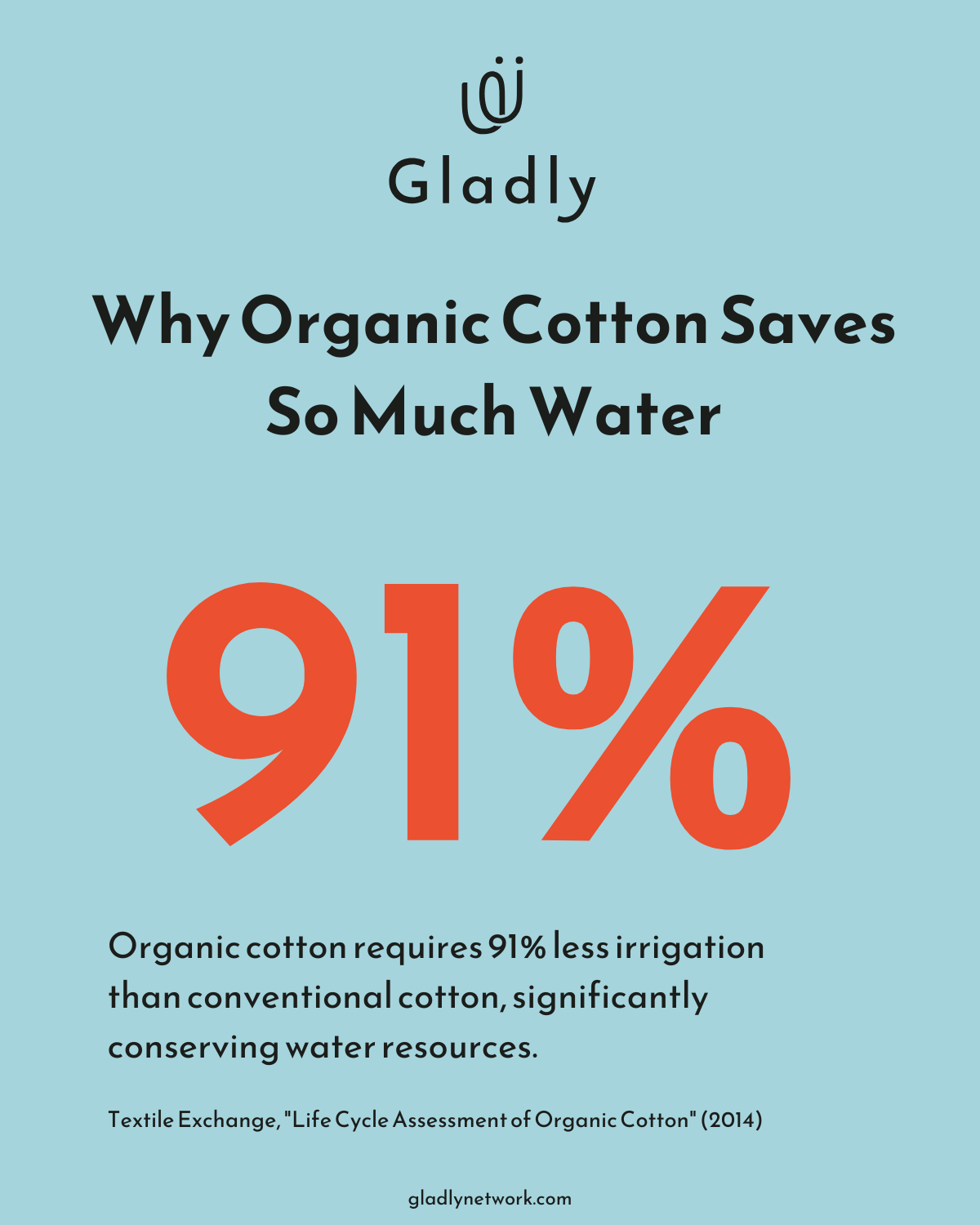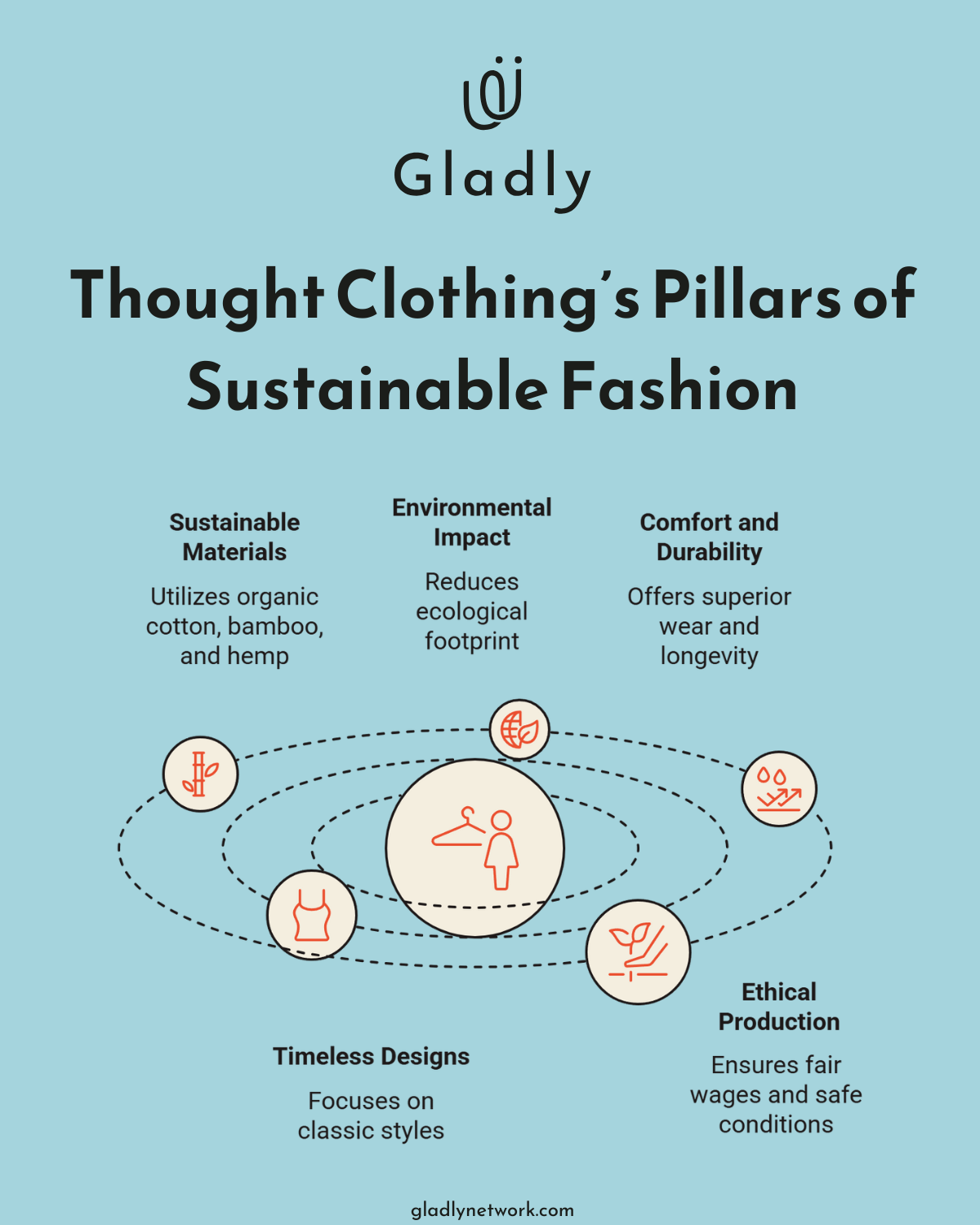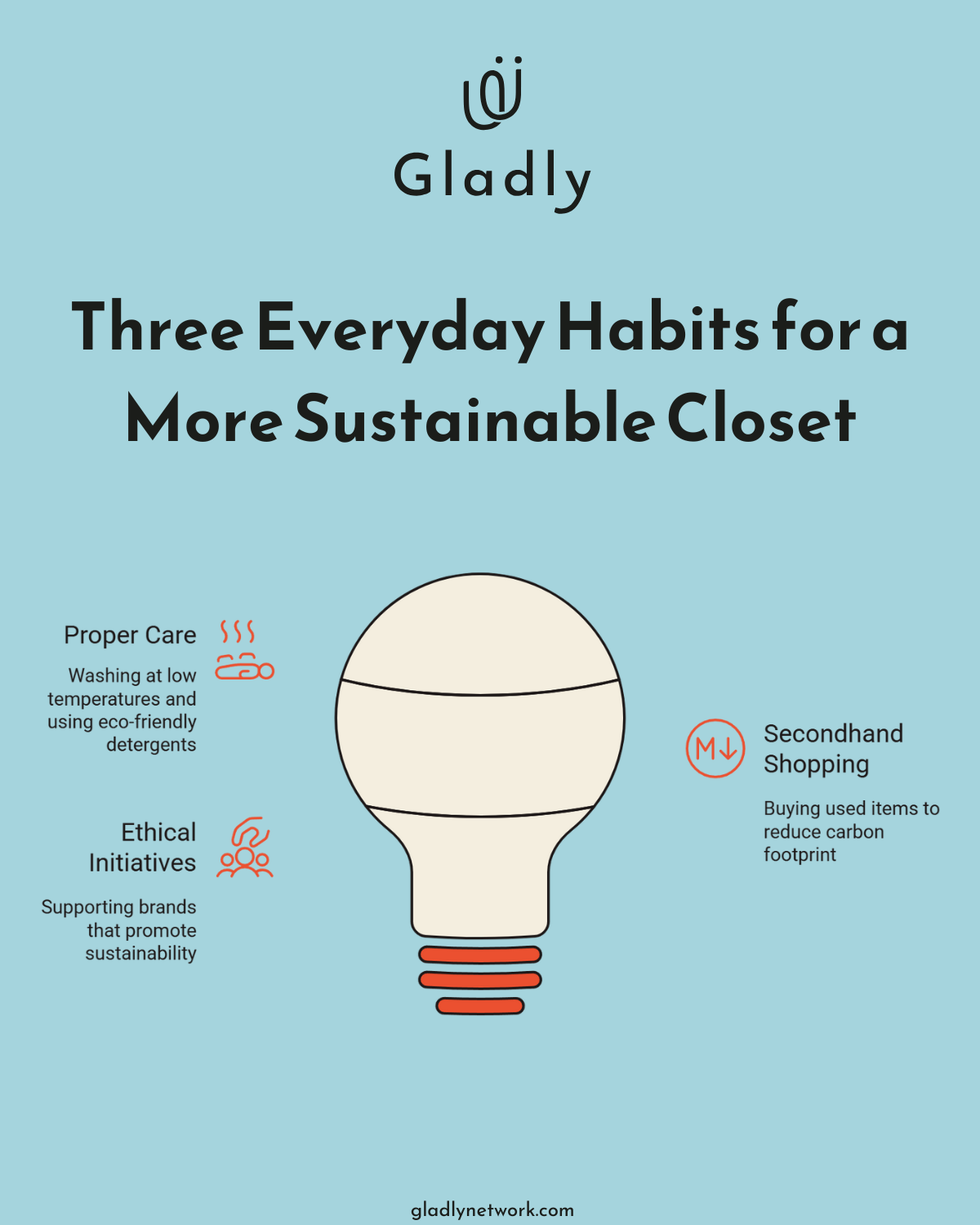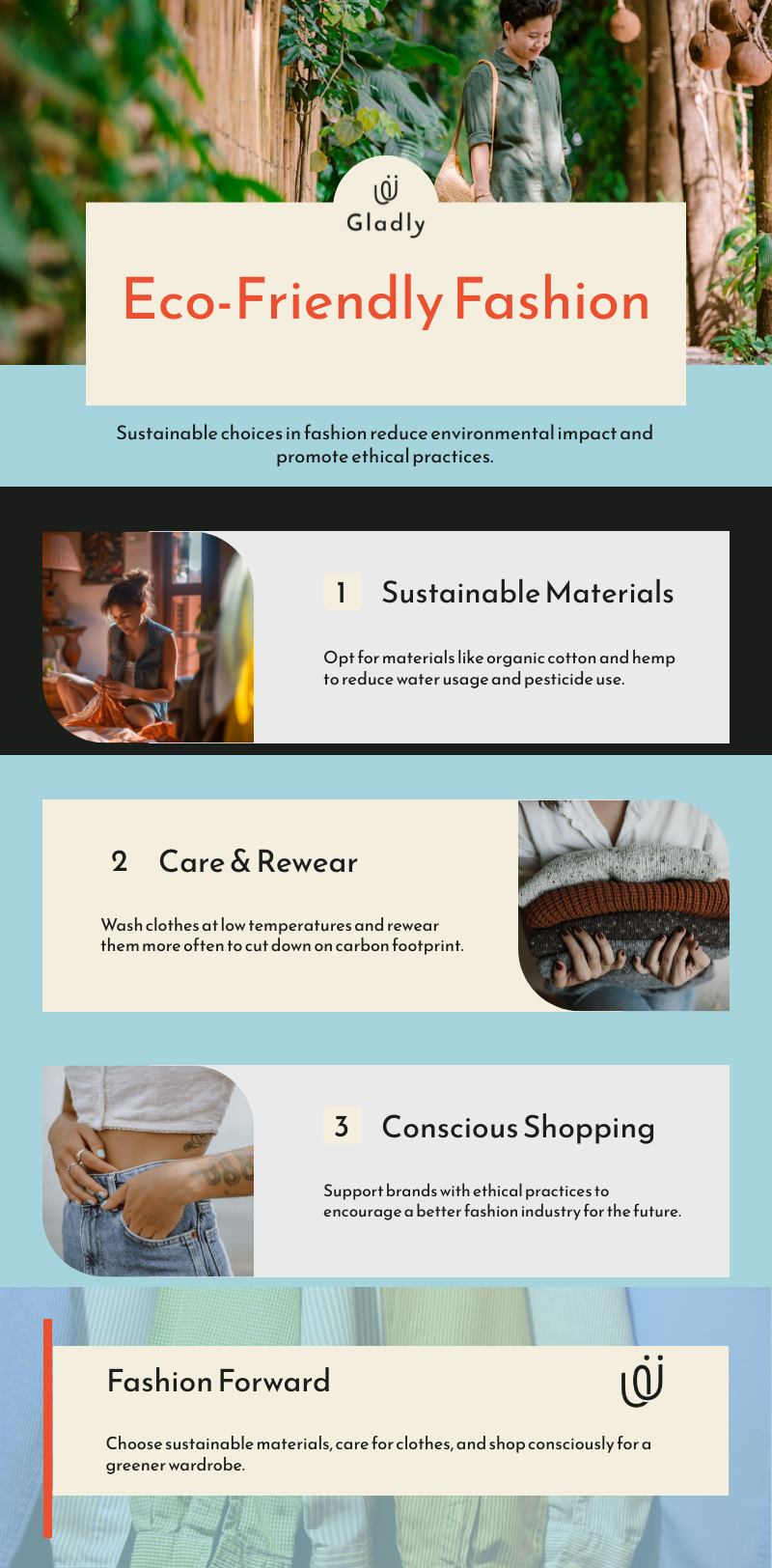Sustainable style is changing the way we think about what we wear.
Organic fabrics, ethical production, and long-lasting design are shaping a new kind of fashion, one that feels as good as it looks. In this post, we highlight the brands making meaningful progress and share simple ways to build a more thoughtful, sustainable wardrobe.
Why Organic Fashion Matters
Organic fashion represents more than a passing trend; it embodies a powerful approach to positively impact the environment and our health. The choices we make in our clothing can create meaningful change in the world around us.
Environmental Impact
Cotton cultivation occupies 2.5% of the world’s arable land but consumes 200,000 tons of pesticides and 8 million tons of synthetic fertilizers annually. Organic cotton significantly reduces this environmental burden. Organic farming methods promote biodiversity, improve soil health, and conserve water resources. Textile Exchange conducted an analysis in 2014, concluding that organic cotton requires 91% less irrigation than conventional cotton, a staggering difference in resource conservation.

Health Benefits
Organic clothing benefits not only the planet but also our bodies. Conventional cotton often contains harmful chemicals that can irritate skin and potentially lead to long-term health issues. Organic fabrics (free from toxic pesticides and synthetic fertilizers) offer a hypoallergenic alternative. This makes organic clothing an excellent choice for those with sensitive skin or allergies.
Quality and Durability
The investment in organic clothing extends beyond ethical considerations; it’s a choice for quality. Organic fabrics often maintain their shape and color longer than conventional materials. This durability allows us to enjoy our favorite pieces for years, reducing the need for frequent replacements and ultimately decreasing overall consumption.
Economic Impact
The organic fashion industry creates positive economic ripples. It supports fair wages for farmers and workers (a cornerstone of many organic certifications). Additionally, the growing demand for organic textiles encourages more farmers to transition to sustainable practices, creating a virtuous cycle of environmental and economic benefits.
Fashion Forward
Organic fashion doesn’t compromise on style. Many cutting-edge designers now incorporate organic materials into their collections, proving that sustainability and fashion-forward thinking can coexist beautifully. From everyday basics to haute couture, organic options abound for every style preference.
As we explore the world of organic fashion, we’ll discover brands that lead the charge in sustainable style. These companies not only produce beautiful clothing but also champion environmental and social responsibility. Let’s take a closer look at some standout organic fashion brands that are reshaping the industry.
Organic Fashion Brands Leading the Way
Numerous innovative brands that prioritize sustainability without compromising style. We’ve curated a selection of standout companies that redefine eco-friendly fashion. These brands offer a range of options from outdoor gear to everyday essentials, proving that conscious consumption can be both stylish and accessible.
Patagonia: Pioneering Sustainable Outdoor Wear
Patagonia stands as a titan in sustainable outdoor apparel. The company’s commitment to environmental stewardship extends beyond using organic materials. They’ve implemented a groundbreaking Worn Wear program, which repairs and resells used Patagonia gear, extending the life of their products and reducing waste. Some estimates suggest that buying used garments rather than new ones could reduce an individual’s apparel carbon footprint by up to 60%. In 2022, Patagonia took an unprecedented step by transferring ownership to a trust and non-profit organization dedicated to fighting climate change. This bold move ensures that all profits not reinvested in the company will go directly to environmental causes.
Pact: Making Organic Affordable
Pact has made it its mission to democratize access to organic clothing. They offer a wide range of everyday essentials at competitive prices, proving that sustainable fashion doesn’t have to break the bank. Pact’s commitment to Fair Trade Certified factories ensures ethical working conditions throughout their supply chain. Their product line includes everything from underwear to bedding (all made with GOTS-certified organic cotton). Pact’s packaging is also 100% recyclable, further minimizing their environmental footprint.
Eileen Fisher: Timeless Design Meets Sustainability
Eileen Fisher has long pioneered sustainable luxury fashion. The brand’s Renew program takes back old Eileen Fisher garments, either reselling them or transforming them into new designs. This circular approach to fashion significantly reduces waste. Eileen Fisher also maintains transparency about their sustainability goals, regularly publishing progress reports. By 2020, 70% of their materials were organic, recycled, or eco-friendly (to reach 100%).

Thought Clothing: Eco-Friendly Fabrics for Every Wardrobe
Thought Clothing specializes in creating wardrobe staples from sustainable materials like organic cotton, bamboo, and hemp. These fabrics not only have a lower environmental impact but also offer superior comfort and durability. Thought Clothing’s designs focus on timeless styles that transcend fast fashion trends, encouraging consumers to build a lasting wardrobe. The company also emphasizes ethical production, ensuring fair wages and safe working conditions throughout its supply chain.
Gladly Shop: Conscious Fashion, Real Benefits
While not a fashion brand itself, Gladly deserves mention for how it brings sustainable values into everyday shopping. The platform connects conscious consumers with ethical partners, many of them focused on organic materials, slow fashion, and fair labor practices. Signing up is free, and members unlock exclusive discounts on curated products that align with mindful living. Whether you’re looking for versatile wardrobe staples or brands that prioritize people and planet, Gladly Network makes it easier to choose well without paying more.
These brands represent just a fraction of the exciting developments in organic fashion. As consumers, our choices shape the industry. Supporting sustainable companies signals a growing demand for a more thoughtful fashion future. Now that we’ve explored some of the leaders in this space, let’s look at how to build a wardrobe that reflects these values. Meet our shop!
Building a Sustainable Wardrobe
Prioritize Quality Over Quantity
Fast fashion has a massive environmental impact. It is the second-biggest consumer of water and is responsible for 10% of global CO2 emissions. To combat this waste, we recommend you focus on high-quality pieces that last. A study by the Ellen MacArthur Foundation found that doubling the average number of times a garment is worn reduces its environmental impact by 44%. Invest in well-made items from brands known for their durability (such as Eileen Fisher or Patagonia).
When curating a more mindful wardrobe, comfort and longevity often go hand in hand. Brands like Comfrt take this approach seriously, designing everyday essentials with durable materials and a focus on well-being. Their slightly weighted garments are intended to offer a sense of ease throughout the day, reflecting a broader shift in fashion toward pieces that support both physical and emotional comfort. As with many sustainable brands, the emphasis is on quality over quantity, with styles meant to be worn often and kept longer.
Choose Versatile Pieces
A capsule wardrobe of versatile pieces can significantly reduce your fashion footprint. The average American buys 68 garments a year but wears only 20% of their wardrobe regularly. Select items that you can mix and match easily. For example, a classic organic cotton white shirt can pair with jeans for a casual look or dress up with a skirt for work.

Extend Your Clothes’ Lifespan
Proper care can dramatically increase the longevity of your garments. Wash clothes at lower temperatures (30°C or below) to reduce energy use by up to 40% (according to the Energy Saving Trust). Use eco-friendly detergents and air-dry when possible. Learn basic mending skills – WRAP’s research shows that extending the lifespan of clothing by just nine months could reduce carbon, water, and waste footprints by up to 20%, saving £5.
Embrace Secondhand and Vintage
The secondhand market is booming, with expectations to reach $64 billion by 2024 (according to ThredUp). Shop vintage not only to reduce waste but also to find unique, high-quality pieces. Platforms like Depop and Vestiaire Collective make it easy to find pre-loved designer items. Buying one used item instead of new reduces its carbon footprint by 82%.
Support Ethical Initiatives
Look for brands and initiatives that align with sustainable values. For instance, Gladly Network rewards acts of kindness, partnering with sustainable brands to offer prizes. This approach encourages positive community impact while promoting ethical consumption. Support such initiatives to foster a culture of sustainability beyond just fashion choices.
Choosing Well, Wearing Better
Sustainable fashion isn’t just changing what’s in our closets; it’s reshaping how we think about value, longevity, and impact. Brands like Patagonia, Pact, Eileen Fisher, and Thought Clothing show that ethical choices can still reflect personal style. Their work reminds us that looking good and doing good don’t have to be at odds.

Every purchase tells a story. When we choose quality over volume, or care for what we already own, we reduce waste and extend the life of what we wear. And with the average American buying nearly 70 garments a year but wearing only a fraction regularly, there’s real room to shift toward habits that serve both people and planet.
At Gladly, we connect conscious shoppers with exclusive offers from brands that give back. By making it easier to shop with purpose, we hope to grow a culture where sustainability, generosity, and good design go hand in hand.











